Is the Depression Spectrum Really More Of a Circle? Or a Spiral? Or a Keyboard?
Adjusting my framework as it relates to my lived experience and to the relationship of mental health to creativity.
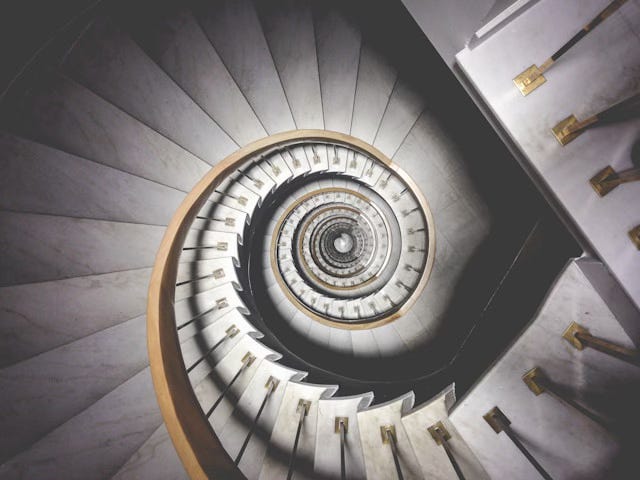
When I was in my late twenties, I crashed, unable to outrun the symptoms of depression that had been plaguing me for as long as I could remember, willing to try anything - even admit that perhaps it wasn’t that I was lazy/ not strong enough/ not trying hard enough/ dramatic and maybe instead I had a condition. I was initially diagnosed with double depression, something I didn’t even really think a whole lot about the time, and which I’ve only thought about a little bit since if I’m honest. But I’ve just finished reading Life B: Overcoming Double Depression, a memoir by Bethanne Patrick, and it’s got my mind whirling a bit.
For those who aren’t familiar, double depression means that you are having a major depressive episode (with symptoms that last two weeks or more) and on top of that you that you have chronic depression where symptoms last two years or more. At the time I was diagnosed, that latter condition was called dysthymia; it’s now called persistent depressive disorder. So, I meet the criteria for persistent depressive disorder and sometimes have bouts of major depression, which means that I have double depression.
In Life B, author Bethanne Patrick describes:
“Chronic depression spirals into major depressive episodes during times of great stress. As my doctor explained it, from my earliest experience, I’ve begun each day lower than what we might call normal. And sometimes much lower. On my best days … I was depressed. On my worst days I considered ending my life.”
All of that resonates with my experience. I have a lot of protective things in my life to ward off the depression (medication, therapy, routines, support system, etc.) but I would say even on my best days I generally start off at a lower level than “average.”
At the time of my initial diagnosis, I had never even heard of the depression spectrum. There was depression, then there was bipolar disorder, and they were two different things. I came to learn that these are both mood disorders, and that there are a lot of other mood disorders, and that they exist on what’s called the depression spectrum for unipolar to bipolar depression. I have written about this a lot. And really it underpins a lot of what I think about in terms of using spectrums as a framework for understanding the complex relationship between art and mental health.
But the truth is that even when I’ve written about it, I’ve had trouble picturing exactly what goes where on a linear spectrum. Because, obviously, human minds aren’t linear and everyone’s experience of mental health is unique. But even if we narrow it down to just the diagnostic criteria for these different types of depression, things aren’t really clear. So, here’s what I’ve usually described it as:
On one end of the spectrum is persistent depressive disorder (PDD) (depression lasting two years or more.) On the other end of the spectrum is bipolar 1, in which someone has experiences of both depression and mania. Close to PDD is major depression. Close to bipolar 1 is bipolar 2 (depression and hypomania.) So essentially what we’re saying is “bipolar 2 is closer to depression than bipolar 1 because the highs aren’t as high … But I always kind of questioned whether PDD really belongs to the furthest end of the other side of the spectrum. Because in my experience, PDD is awful because it’s chronic but major depression is more intense - so is it “more awful?”
In the middle of the spectrum, you find things like postpartum depression and postpartum psychosis (the latter closer to bipolar) and cyclothymia (closer still to bipolar) and … well, you get the idea. And really, this has been a useful frame for generally understanding that these things aren’t separate from one another but instead have a lot of similarities and exist together in some sort of way.
So, I’m reading Life B. which is about one woman’s experience of double depression. And I see something that blows my mind, that double depression is:
“The concept of cycling at very low moods. Some physicians believe that people who suffer from double depression are really suffering from a form of bipolar disorder in which depressive episodes are only rarely and irregularly interrupted with a kind of mania. In my case, I wasn’t experiencing mania, exactly; my manic episodes consisted of those precious days and weeks during which I felt normal.”
WOW. Wow like when you read something and suddenly a thing you learned about yourself twenty years ago makes sense in a totally different kind of way.
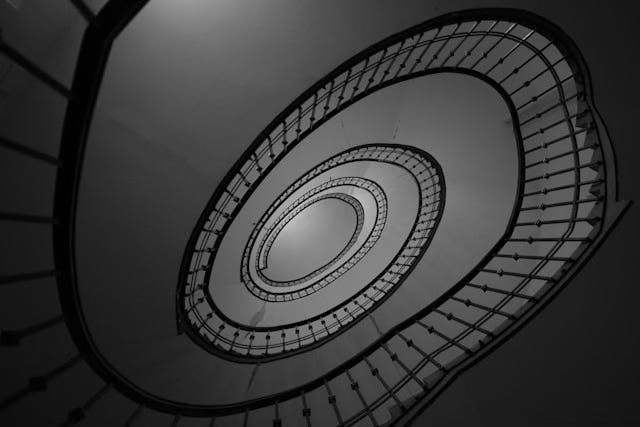
I’ve always been interested in bipolar depression and its potential role in my family history. I’m the only one in my family who “believes in” therapy and treatment so I’m the only one with an official diagnosis. But after a lot of conversations, some more open than others, I’m fairly confident in saying that depression runs in our family, maybe on both sides but definitely on dad’s side, and that I have always wondered if there’s a bipolar element there. I haven’t felt it myself. I don’t want to get too into the details of anyone’s story myself but suffice to say that my dad would openly admit he had huge mood swings and sometimes would call himself bipolar in a colloquially way and another family member seems strangely drawn to people with bipolar depression.
And this all kind of makes sense if depression is a spectrum that we can all relate to in some way … but it makes even more sense if we think of double depression as very similar to bipolar at a lower octave. If it’s a spectrum, double depression is further to the left than PDD or major depression, since it’s both of those together … but then it’s also similar to bipolar depression. So maybe instead of visualizing this as a linear spectrum, it’s more like a circle, where the ends actually close the circle and are more similar to one another than different.
Or maybe it’s more helpful to think of it as a spiral, a concept I often find helpful for exploring all different aspects of humanity. This is possibly because it’s literally what our DNA is. I think of my personal growth as a spiral staircase, where it often seems like I’m learning the same lesson again and yet I’m seeing it from a slightly different vantage point.
Or maybe the linear spectrum is the right idea but only if we think of it like the keys of a piano. Double depression, then, is further to the left, but it’s the same thing as bipolar depression only at a lower octave. We understand each other’s songs even if we aren’t singing in the same key.
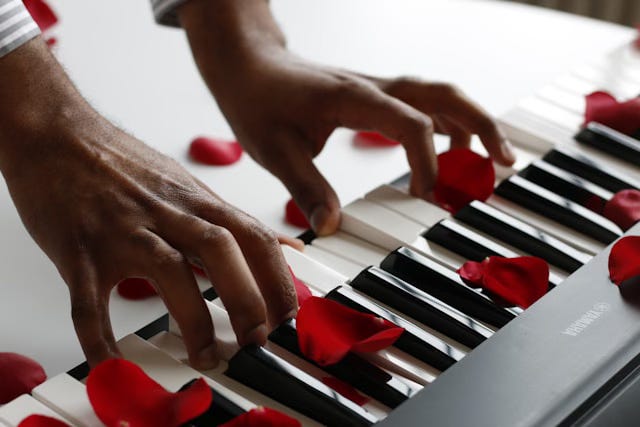
Of course, some people will ask why this even matters at all. Some people hate diagnosis and labels. I was one of them very vehemently at a time. But my diagnosis helped me in a lot of ways. And then it wasn’t quite a right fit so I moved on a bit, where the diagnosis is a bit of a shorthand for myself and others to describe my experience in the world, but it isn’t the be all and end all of me. For me, double depression is a framework that I can use to understand myself … and a starting point for learning about some methods of therapy/medication/self-care/etc that might (or might not) work for me. Some people don’t need or want that and that’s totally okay.
For me, frameworks are useful - in my own life and in the research I’m doing as I try to understand the nuances of the complex relationship between art and mental health. For me, it’s interesting but unhelpful to see that there are about a dozen different mood disorders in the DSM-V, each with their own similar but different criteria. And that doesn’t even get into the relationship between mood disorders and other conditions; for example, schizoaffective disorders is a combination of a psychotic disorder and a mood disorder but differs slightly in criteria from bipolar disorder with psychosis. So, a little more interesting, but still … for me, it makes more sense to kind of look at big groupings and see how things within those groups relate to one another. For me, it’s helpful to look at double depression as similar to bipolar depression, both personally and in my work.
Why? Well, here’s an example … both double depression and bipolar depression have the potential to impact creative content, process, productivity in ways that are similar but also different. By understanding one, I begin to understand the other, and by differentiating between the two, I also learn more about the nuances and complexities. So, for example, both are going to have ups and downs in energy and mood. But for me, with double depression, a “high” just means I’m working at the average person’s “normal” pace rather than staying in bed half the day. In contrast, someone with hypomania or mania may feel extreme creative bursts and may stay up for days creating. I confess that there was a time in my life when I romanticized this, as it sounds more appealing at least than being tired all of the time, but now I see that these are just different experiences with pros and cons to each.
Another thing to consider is the role of medication. Obviously, not everyone with either condition chooses to take medication. People with either condition respond differently to different meds. But, on the whole, people with double depression who choose medication will take anti-depressants that essentially create more normal days with more normal work structure and this can be positive for creativity. In contrast, I’ve spoken to many people with bipolar depression who don’t like the “normal” that their meds create because it dulls the mania and they feel like it dulls their creativity. This isn’t always true and doesn’t have to be true but it’s a common difference in the two in terms of their impact on creativity.
Related to this, people with depression may create more consistently, albeit at a slower pace than average, whereas people with bipolar depression may have much bigger variations in productivity. This is neither good nor bad but it can come into play when creativity is also the way you try to earn a steady income.
This just scratches the surface, but it’s what I’m thinking about lately as I explore double depression through this new lens and wonder about adjusting my frameworks of understanding.
If you read this far, perhaps you liked the work. The work does take work. It only continues with support, so please consider subscribing. My annual rate starts at $10 per year.




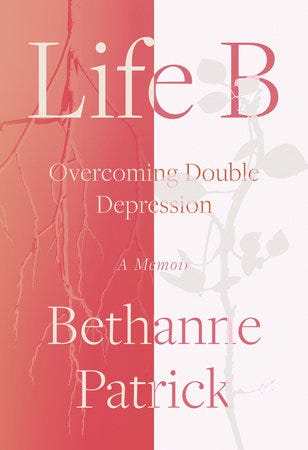


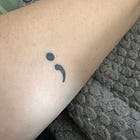
Thank you for this. I've never heard or considered the fact that depression has a spectrum and now laid out like this, it's like "of course it does!" I have Bipolar 2 that was misdiagnosed as Major Depressive Disorder (MDD) so reading your post I could definitely identify the different parts of the spectrum that my own episodes fall on.
I just came across this article now. Thank you for exploring this idea of a spectrum. It’s given me something I hadn’t thought of before to help describe my depression. (MDD here) Usually I’m presented with the linear scale of 1 to 10 and where may mood falls within that structure, but it encompasses so much more than “mood.” There’s the physical aspects as well. Can I get out of bed earlier today, can I do more or less activity, can I actually think somewhat clearly or is it all foggy and disjointed, can I express myself in an understandable way, and can I even form a creative thought. I think the depression actually leaches my creative energy from me and makes it difficult to even access it, or maybe it’s just the meds. Food for thought.